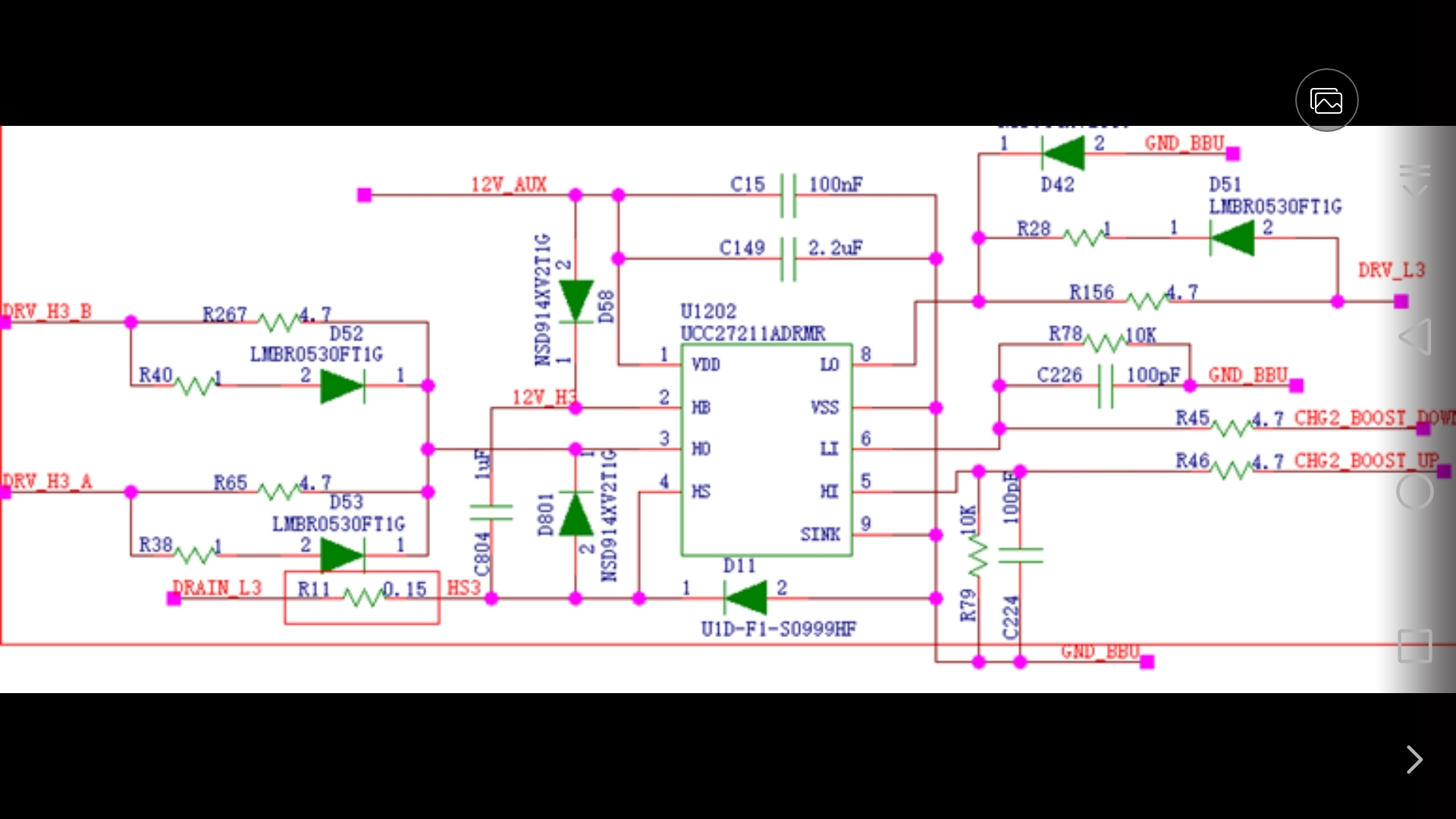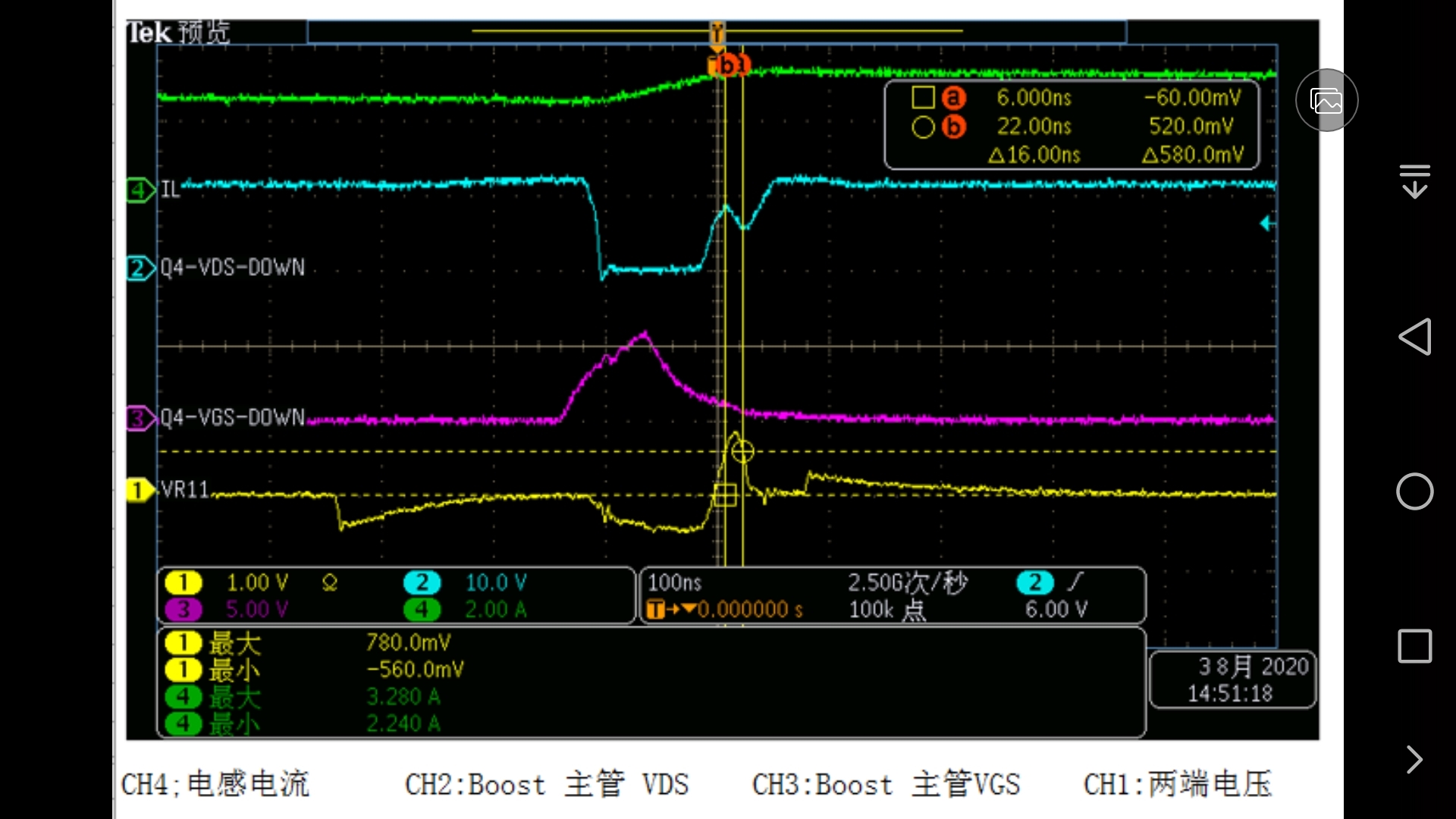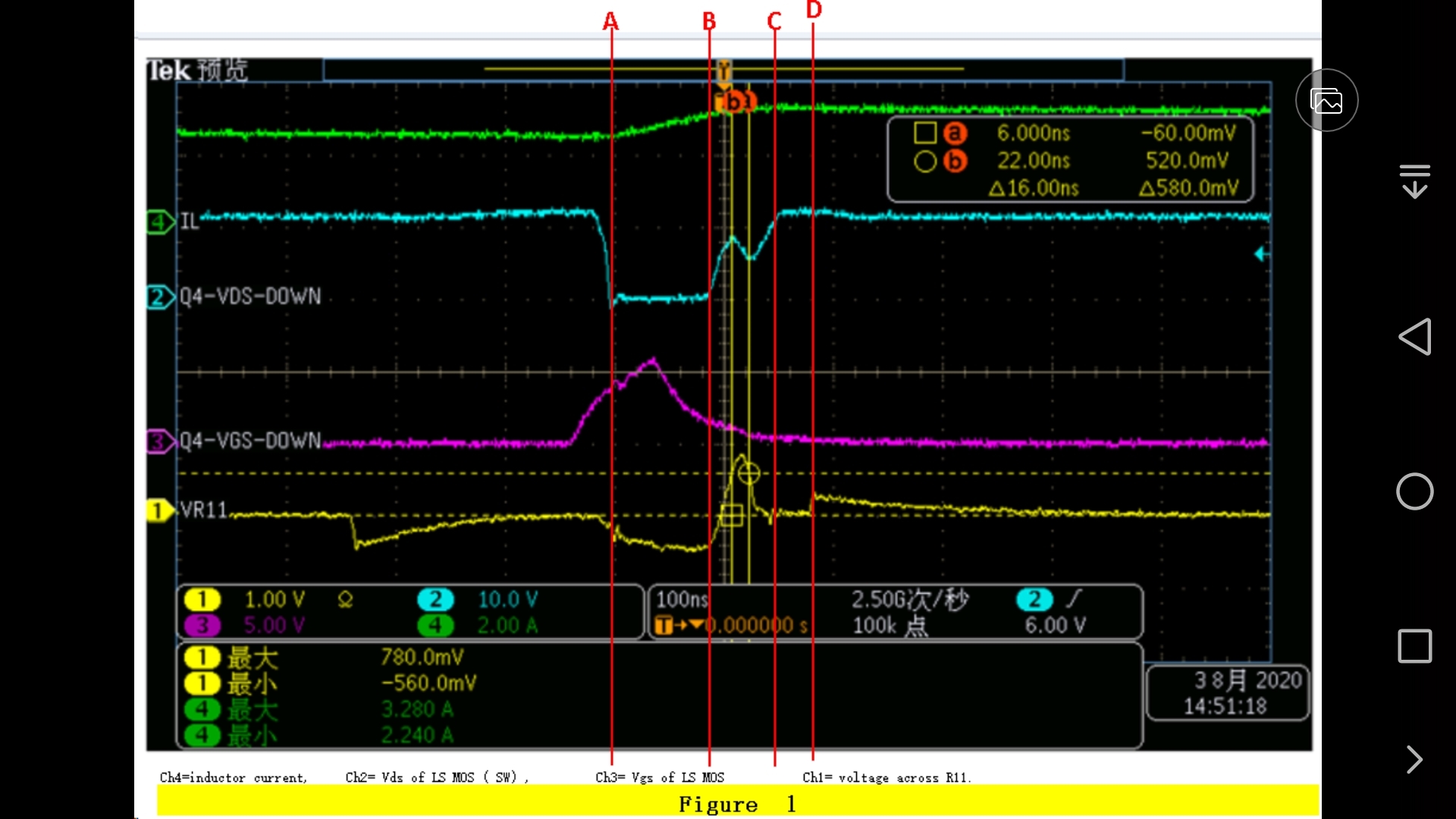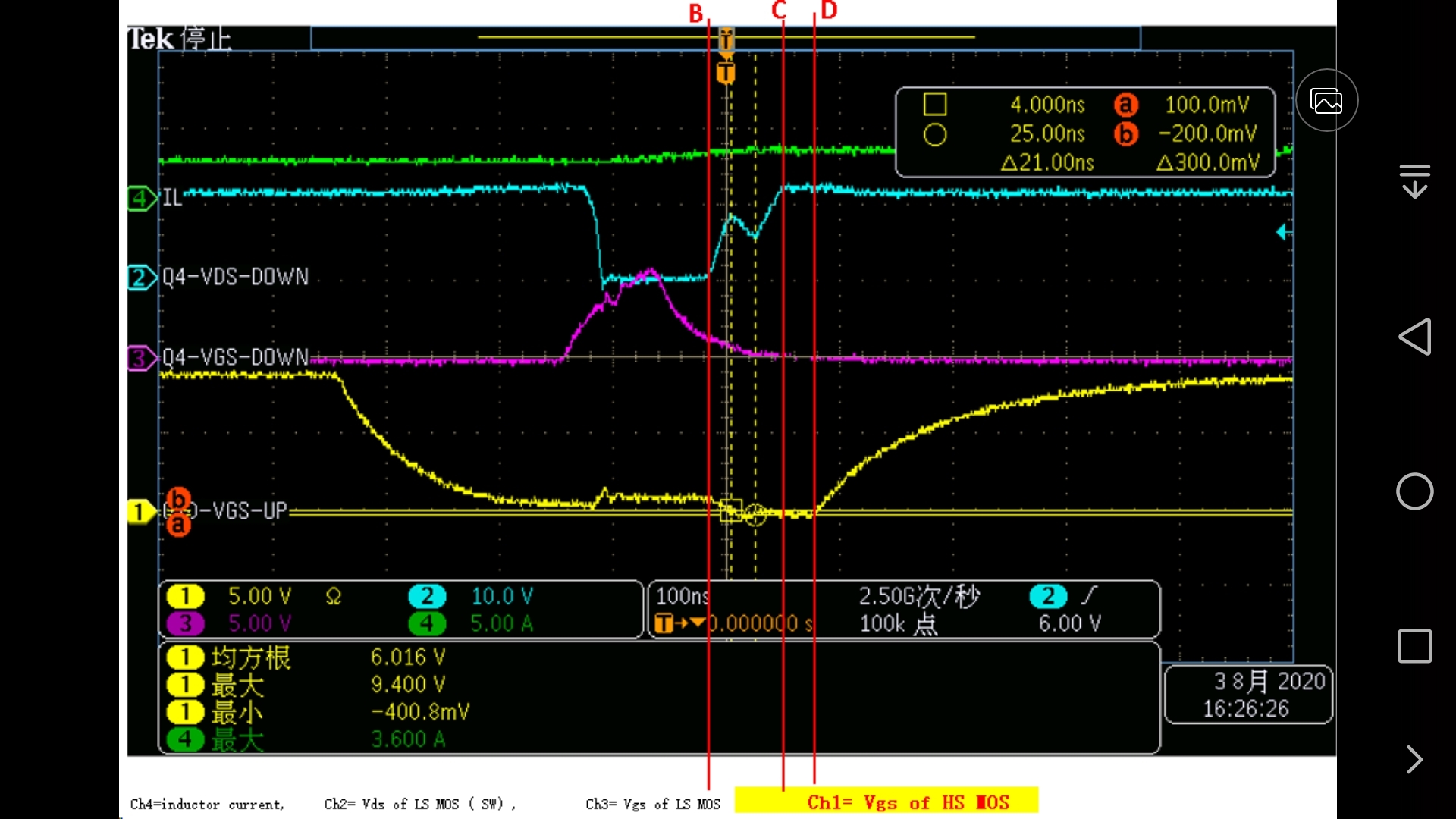Hi,
UCC27211 is used in a boost topology.
pin 8 : driver for LS MOS
pin3 : driver for HS MOS
Drain_L3 : connect to SW
Ch4=inductor current, Ch2= Vds of LS MOS ( SW) , Ch3= Vgs of LS MOS Ch1= voltage across R11.
From the waveform, when LS MOS is turned off, there is 5.5A current from DRAIN_L3 to IC.
#1, what's the reason for the current ?
#2, does the current has effect on IC itself?
Thanks.
BRs
Given





